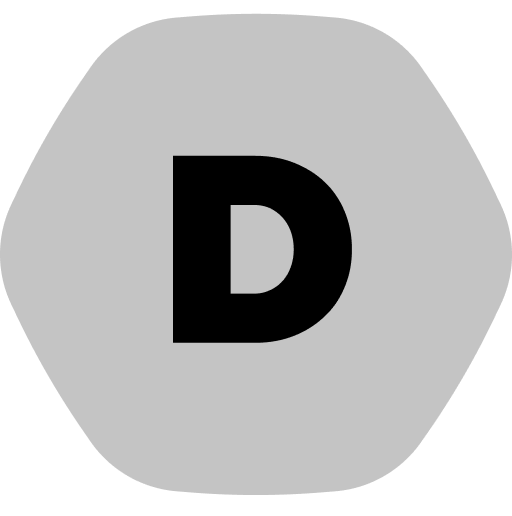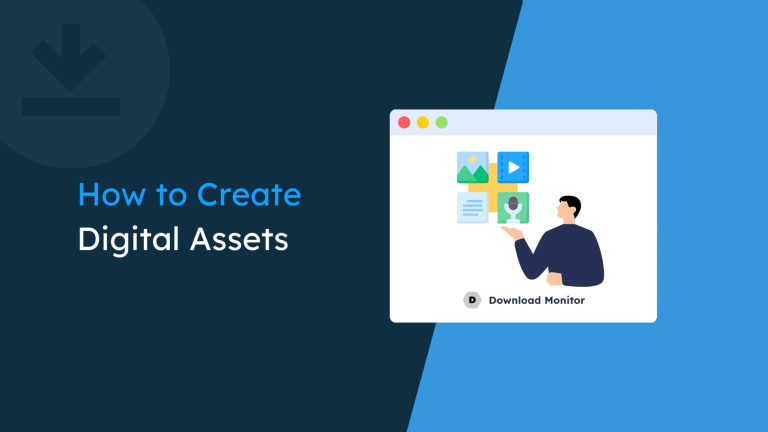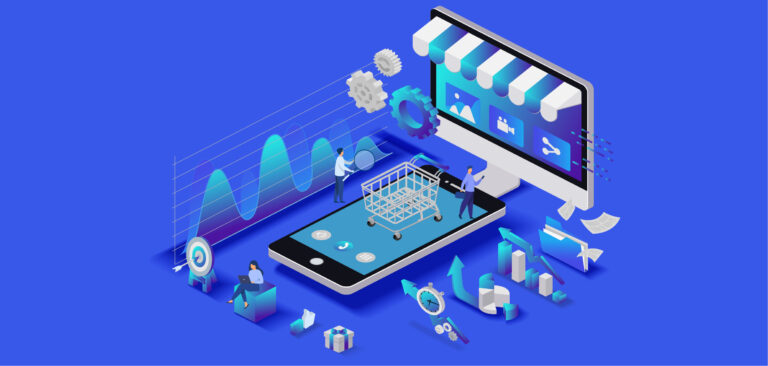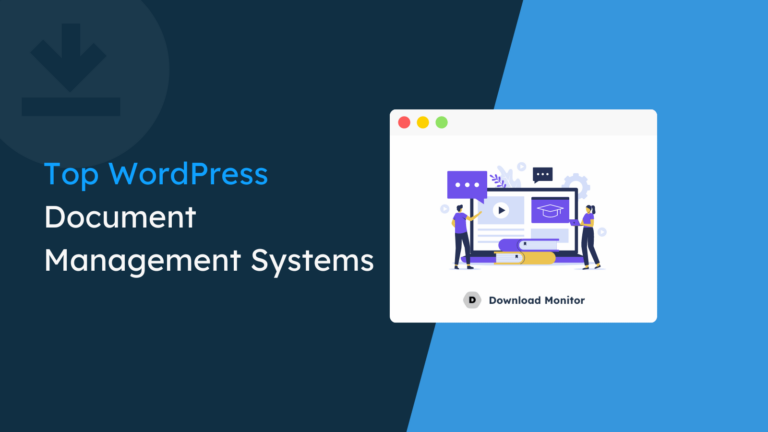You’ve probably heard success stories of people starting a business selling digital products and making it big. Real BIG! And if you have skills that are similar to theirs – for example, graphic design, photography, music – then chances are you’ve thought about setting up shop, too, at least as a side hustle. (And who knows, maybe even as a full-time job?)
To help you explore this possibility, let’s go through all the steps of creating a digital product. You might find that it’s easier than you think!
And along the way, we’ll answer some basic but important questions, such as What are digital products, really? Can I really market them, and how? And is that a good idea in the first place?
Digital products — What are they?
Everyone knows what physical products are. They’re things like merchandise, apparel, and other goods that can be purchased and held with our hands.
By contrast, digital products are products that are, well, digital. They’re goods that exist in digital form and provide value to users by answering their questions, solving their problems, or even just providing entertainment.
In other words, they’re something you can create from scratch using a laptop, computer, or phone (maybe from the comfort of your own home) that you distribute online and are useful to other people. Digital products can come in various formats such as ebooks, images, videos, games, media, courses, templates, software, and more.
They’re delivered digitally, which means they’re not physically shipped to clients and may instead be downloaded, streamed, or viewed right away on a customer’s computer, smartphone, or tablet.

Digital products don’t necessarily have to be distributed only for money. They can also be completely free of charge to support an already existing physical product or service, but can also be given away in exchange for an email address, social media shares, or other types of info.
As an example, a software is considered a digital product as long as it has users. There is also software with no users, which is software that interfaces with other software which wouldn’t count as a digital product.
Why is it a good idea to create digital products?
To generate income and profit, of course!
And the good news is, digital products are easier to monetize than physical items. The required initial investment is minimal, operating expenses and unexpected costs are typically low, stock is limitless, and you can work from home.
Additionally, you can automate much of the process of marketing and selling. Digital goods are easier to market because they’re easier to distribute, more durable, replicable, and frequently easier to make.
But aside from money, digital products can also serve other purposes, even if not to earn money (directly anyway). Here are other things you can do with digital products:
- Gather leads for your business. You can even use digital products as an incentive to collect emails. From there, you can nurture those leads to turn them into potential clients.
- Discover your audience. You can make use of forms to gate your digital products. With them, you can collect important information about the people interested in your company or products. That info can be anything, such as a name, country, birthday, occupation, company name, and interests.
- Create visibility. A digital product can be offered in exchange for a social media share (Twitter, Facebook, Instagram, etc). This tactic is useful to gain more visibility through a snowball effect. Once a person shares something within their circle, other people might see it and share it within their network as well.
- Offer support for your existing clients. If your business already offers useful products, you may create free digital products that can add extra value to your existing clients. For example, if you sell printing machines and supplies, you can offer users free digital design templates or even a PDF with tips and tricks to start a printing business.

And as a bonus, digital products can be transformed into physical products to sell. For example, digital art can also be printed, and many choose a print-on-demand service for this.
In the end, it all comes down to your objectives. And the truth is that you don’t have to pick between selling digital and physical products — nothing prevents you from selling or distributing both. The most important thing is that you thoroughly assess your options and proceed with caution.
But if you’re just starting out and you don’t have a high budget, digital products are easier to create and turn into profit.
Digital product examples
All forms of digital products can be practical online business ideas. You need only your imagination.
No longer is selling digital products just about ebooks. They’re just the first thing that comes to mind when someone thinks of a digital product, but they’re far from the only type of digital product that can be sold online. We’ve already mentioned a few examples above, but here’s a more extensive list of the different types of digital products you can sell online:
- Ebooks: PDF guides, resources, documents, fiction/non-fiction books, manuals, essays, cookbooks, textbooks, case studies
- Courses: computers and technology, business and entrepreneurship, arts and crafts, health and fitness, education, writing, lifestyle/personal development
- Photography: art, stock photos, presets, filters, travel images, event images
- Video Content: self-created video content, stock videos, video training courses, animations, interviews, tutorials, trailers, advertisements
- Audio Content: podcasts, audiobooks, music, sound effects, stock audio, voiceovers
- Digital Art: licenses for digital assets, social media graphics, icons, infographics, fonts, book covers, illustrations
- Templates: emails, websites, presentations, mockups, presets, website themes
- Software: Software as a Service (SaaS), applications, plugins, extensions, video games
Depending on the niche, some digital products are more profitable than others. You just have to do some market research before deciding what to create and sell.

You can check our article on how to create digital downloads to sell which gives you more insight into the process of creating digital downloads from start to finish. We also have another helpful guide to determine which are the most profitable digital products that might interest you.
How to create and prepare to sell digital products
How you develop digital products depends on the type of digital items you wish to create. The development process will vary greatly depending on the type of digital product, such as ebooks, courses, templates, software, etc. Still, you’ll ultimately have two options: build your own digital products, or hire someone else to do it for you.
- Creating digital products yourself. If you’re just getting started and don’t have the funds to engage outside help, or if you have the ability and experience to produce your own digital products, go for it! One of the biggest benefits of digital items is that you don’t have to deal with a manufacturer or supplier to develop your product if you don’t want to; that’s one of the biggest barriers to entry for physical product sellers.
- Getting someone to create your digital products for you. You can also hire help to build your digital products, whether you need help creating the content or putting the product together in a digital format. Depending on your budget and intended outcome, you can hire freelancers, professionals, agencies, or other businesses to help you build your items.
But no matter which route you pick, you still have to go through a few steps to settle on the type of digital products you want to create and distribute.
Step #1. Flex your imagination muscles
Naturally, you’ll begin by brainstorming content ideas for the products you’ll sell. Don’t be afraid to get imaginative!
In some cases, it’s significantly easier to sell educational or informative content than content for entertainment (such as music). This is because the quality of entertainment is more subjective and difficult to assess than the quality of informational content.

As a result, a big part of learning how to make digital items is brainstorming your skills. Many people are willing to pay to learn your abilities, which may surprise you.
Step #2. Research your potential customers
Customer research is, without a doubt, the most crucial aspect of the entire process. It will be pretty tough to market your product if you don’t understand your customer.
Create a persona for your customer, to begin with. A buyer persona thoroughly describes your customer’s demographic and personal difficulties.
You’ll be able to design more focused marketing tactics and personalize the product to their individual demands. It’s all part of the digital product development process.

Here are some things to consider as you develop your buyer persona:
- Gender, age, job title, and income level of your target
- A pain point that your product can fix
- What solution they’ve tried before trying yours
- What they looked up on the internet before coming across your product
- Whether they have desires that your products can indirectly fulfill
Step #3. Curate your content
With your consumer persona in mind, you must now make an even more important decision. What type of digital product do you intend to create?
The type of product will also influence the software you might use to create them. Here are some examples:
- Digital art. You could potentially use Adobe Illustrator or Photoshop to create art that you will later sell.
- Stock videos. Purchasing a camera isn’t essential — you could even use your mobile device! But if you want to sell top-quality footage, investing in some high-end equipment would be ideal. When it comes to editing, you could potentially use Adobe After Effects.
- Ebooks. You can use even just Google Docs or possibly Grammarly to make sure your text is flawless in terms of spelling, punctuation, grammar, and other considerations.
- Courses. If your course makes use of video content, a professional camera may not be necessary (as is also the case for stock videos). Just film your content with your mobile device, do a voiceover and use software like Filmora to put together the video course.
- Podcasts. A good quality microphone and a nice audio editing software like Adobe Audition are all that you need to start recording audio for your podcasts.
- Photography. Since phone cameras evolved a lot in the past few years, a mobile device and Adobe Lightroom is enough to get you started on selling stock photography.
- Website templates. A bit of UI/UX design knowledge and free software like Figma are all you need to create stunning website designs.
As you can see, there’s no cookie-cutter build for creating digital products since the process heavily depends on what you want to create. For more detailed help, plenty of guides on YouTube can help you create specific digital products.
Step #4. Set your price
Your pricing strategy is critical, as a $5 ebook will take far less effort than a $300 monthly email subscription or a $3,000 course.
Furthermore, there may not be a demand for a high price point in some niches. For example, while many individuals would gladly pay $1,000 for SEO training, you may discover that a $1,000 tango dance course has little market.
It’s worth noting that the price ranges vary, greatly depending on:
- Content quality
- How you portray the product
- Additional perks (e.g., community, Q&A, etc.)
- Your reputation as a specialist in that niche
Platforms to sell digital products
If you create digital items and want to branch out into online sales, you’ll need a platform to broaden your horizons, acquire new clients, and expand internationally.
A separate online store, a shop linked to your existing website, and third-party platforms are the three main ways to sell digital goods.
Many tasks are automated when you use a dedicated platform, saving you time and effort. You can even create your own web store from scratch for your digital products, even if you have zero programming experience.

Here’s a list of the best platforms to pick if you want to turn your digital files into hard profit:
- Sellfy: The cloud-based e-commerce platform designed exclusively for companies and individuals who make and sell digital goods, such as ebooks, music, and artwork.
- Wix: A cloud-based website builder with online hosting and design capabilities. You can create your own website with a built-in store to distribute digital items.
- Gumroad: A marketplace where virtually anyone can sell almost anything. The process is wonderfully transparent and straightforward, with none of the problems associated with some of the more popular platforms.
- Creative Market: A global marketplace for handcrafted digital design content created by independent creatives.
- Etsy: It’s mostly used to sell physical vintage products, handcrafted items, art and crafts, as well as a market for digital products that can assist users in creating the physical ones.
- Podia: A multi-platform solution for selling online courses, memberships, and other types of digital items.
- SendOwl: An online platform that allows you to create a storefront and start selling digital items and services quickly and affordably. SendOwl provides for a quick launch, bringing it as near to “one-click” as possible.
- Squarespace: As with Wix, with Squarespace you can create your own website to sell and distribute digital products.
- Download Monitor: A versatile WordPress plugin that helps you expand your audience, track download performance, and convert visitors into paying customers. It includes everything you’ll need to get started selling and distributing digital files through your own WordPress website.
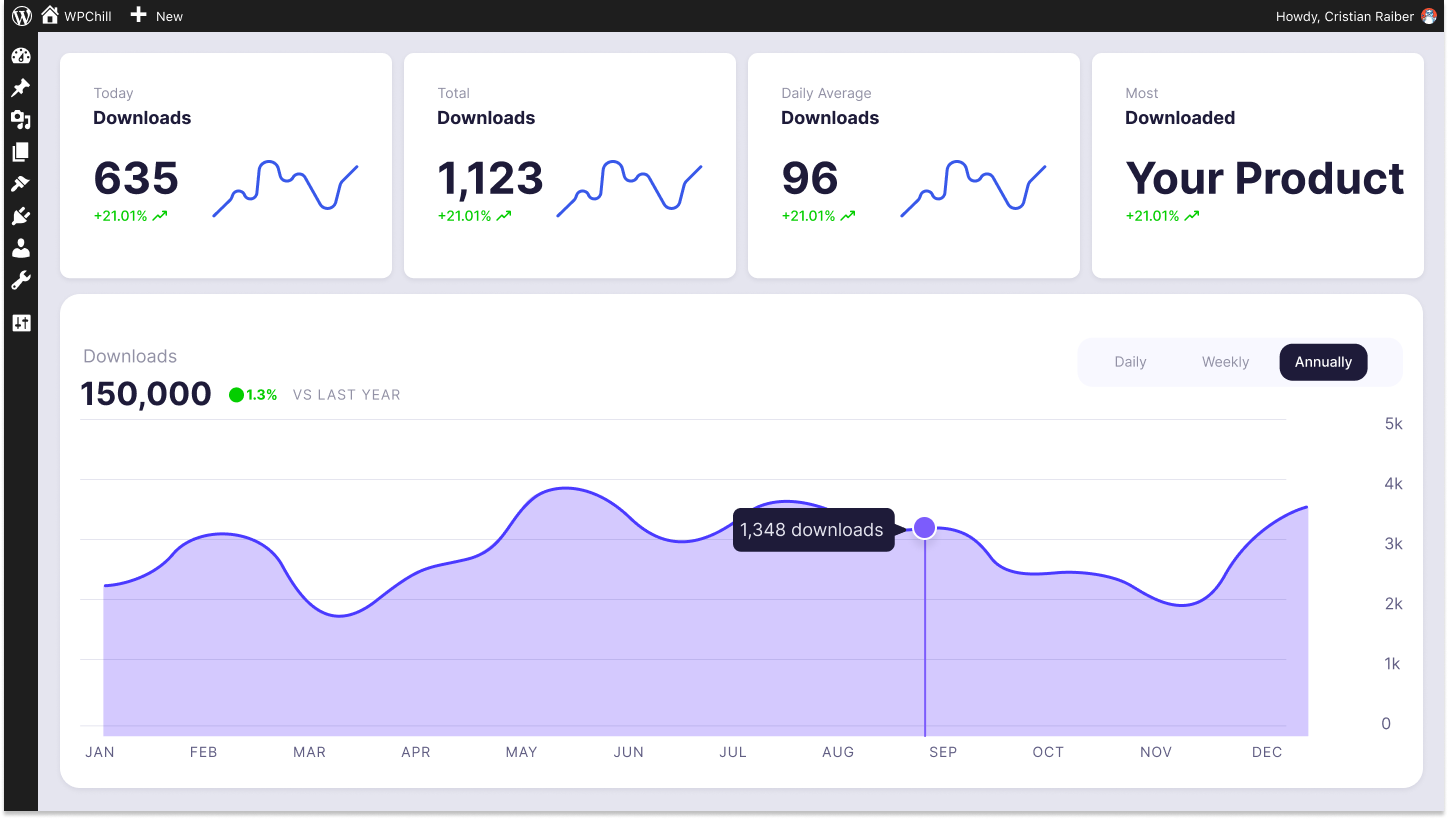
Download Monitor
Grow your audience, track download performance, and convert your traffic into email subscribers with an easy-to-use digital downloads solution for WordPress.
Keep in mind that each platform has advantages and disadvantages, possible side costs, etc.
To learn more about each one, check out our article on the most popular platforms to sell digital downloads.
Earning good money from selling digital products is within reach!
Now you know what digital products are, the main types of digital products, their main characteristics, and tips about how to easily create and sell them.
With so many options for selling digital goods online, you’ll have no trouble finding the one that’s right for you. Whether you want to make videos, write ebooks, or create designs, technological advancements in recent years have made selling digital products online more accessible than ever before.
